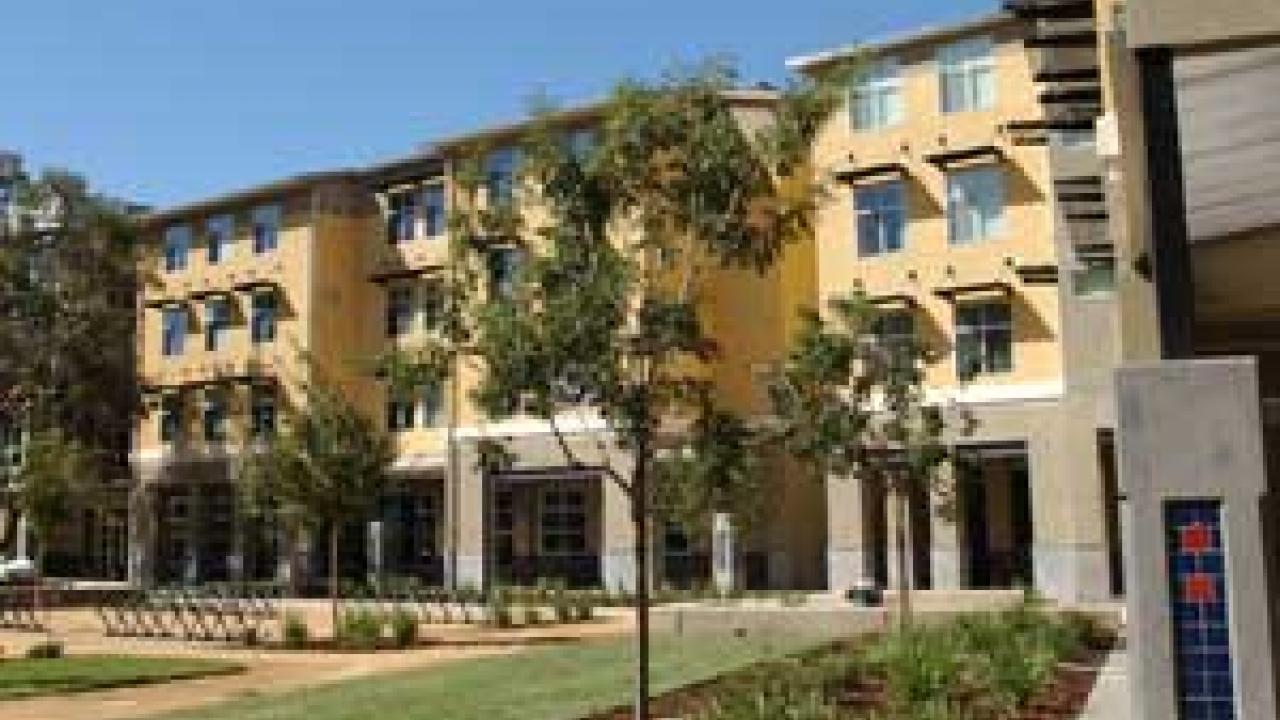The University of California, Davis, expects about 30,170 students to enroll for fall quarter.
When classes begin Sept. 30, it's estimated that the student body will have 59 fewer students than last fall's 30,229. On-campus enrollment is anticipated to average 26,560 over the three academic quarters.
New freshman enrollment
About 4,400 new freshmen are expected to register by the start of classes. That's about 390, or 8 percent, fewer freshmen than last fall.
The decline follows Gov. Arnold Schwarzenegger's call for a 10 percent cut in freshman enrollment and the plan to divert many UC applicants to community college for two years as part of UC's Guaranteed Transfer Option (GTO) program. This summer, however, the state budget agreement resulted in UC campuses offering freshman admission to GTO students and other eligible applicants.
Among its new freshmen, UC Davis will welcome about 275 students who were formerly part of the GTO program. About 67 students admitted through the program have opted to continue with it and attend community college for two years before transferring to UC Davis.
Transfer and other students
About 1,900 new transfer students are expected to enroll, for 149, or 8.5 percent, more students than last fall's 1,751. An estimated 975 of the new transfer students participated in UC Davis' Transfer Admission Agreement program at 82 community colleges throughout the state.
Total undergraduate enrollment is expected to decrease by 209, or approximately 1 percent, to 23,300. Upper-division students will make up 57 percent of the undergraduate student body this year.
Graduate and professional students, including interns and residents, are expected to increase their ranks by 150, for a total of about 6,870.
Fees and financial aid
Undergraduate students who are California residents will pay fees of $7,557 this school year, and resident academic graduate students will pay $8,407.
About two-thirds of the undergraduate student body is expected to be receiving some form of financial aid. By the end of August, aid totaling $119 million -- in grants, Federal Work-Study, scholarships and loans -- had been awarded to about 14,000 undergraduates for 2004-05.
To help students stay informed about their loan indebtedness, the Financial Aid Office has introduced a Web-based tool that provides them with estimates of their current loan indebtedness at UC Davis, allows them to make future estimates and calculates estimated loan payments.
Programs and services
New academic programs offered for the first time this academic year include:
- certificate programs in environmental law for law students and in business development for MBA and graduate students;
- majors in computational applied science, mathematical and scientific computation, technocultural studies and film studies; and
- minors in quantitative biology and biological informatics, and Middle Eastern and South Asian studies.
This academic year the campus continues its transition to Division I in the National Collegiate Athletic Association, and student-athletes begin playing Division I competitors.
New in health care are dental benefits for undergraduate students; a secure Internet service by which students can schedule appointments at the student health center, communicate with clinical staff, receive test results and more; and a pilot program offering massage services at a fee for faculty and staff members.
The third annual Campus Community Book Project will focus discussion groups and other activities on "Twilight: Los Angeles, 1992." Author Anna Deavere Smith interviewed nearly 200 individuals about the riots in Los Angeles following the Rodney King verdict and wrote a play.
Housing
Student Housing will accommodate about 4,340 undergraduates in the residence halls this year, including some 3,900 incoming freshmen. Two halls, Castilian North and South, will house about 340 transfer, continuing and international students.
In addition to the undergraduates in residence halls, almost 1,820 other students will live in Student Housing facilities, privately owned projects and family housing at UC Davis.
Construction continues on a larger dining commons to serve students living in the Segundo area. The new facility is scheduled to open in the spring of 2005.
In the Tercero area, work is under way to build residence halls for about 400 students and to expand the dining commons. Included in the project will be a lounge and an academic advising center. Both projects are scheduled for completion in fall 2005.
Other construction
The campus continues one of its biggest building booms, and many projects are or will be in construction during the academic year. Among them:
- The $95 million Genome and Biomedical Sciences Building, being built in the Health Sciences area, is scheduled for completion this fall.
- The $56.7 million Sciences Laboratory Building, east of Briggs Hall, is set to open for classes in the winter quarter. Designed specifically for undergraduate teaching, it will contain 34 laboratories for biology and chemistry classes as well as study space, computer labs and a teaching greenhouse.
- Construction is under way on the School of Veterinary Medicine Instructional Facility, a $27 million classroom complex. Other vet school facilities under construction are Veterinary Medicine III A, a $77.4 million teaching and research facility and the $4.2 million Equine Athletic Performance Laboratory.
- The Mathematical Sciences Building, now under construction, will provide departmental space for mathematics and statistics. It is scheduled for completion in summer 2005.
Media Resources
Julia Ann Easley, General news (emphasis: business, K-12 outreach, education, law, government and student affairs), 530-752-8248, jaeasley@ucdavis.edu
